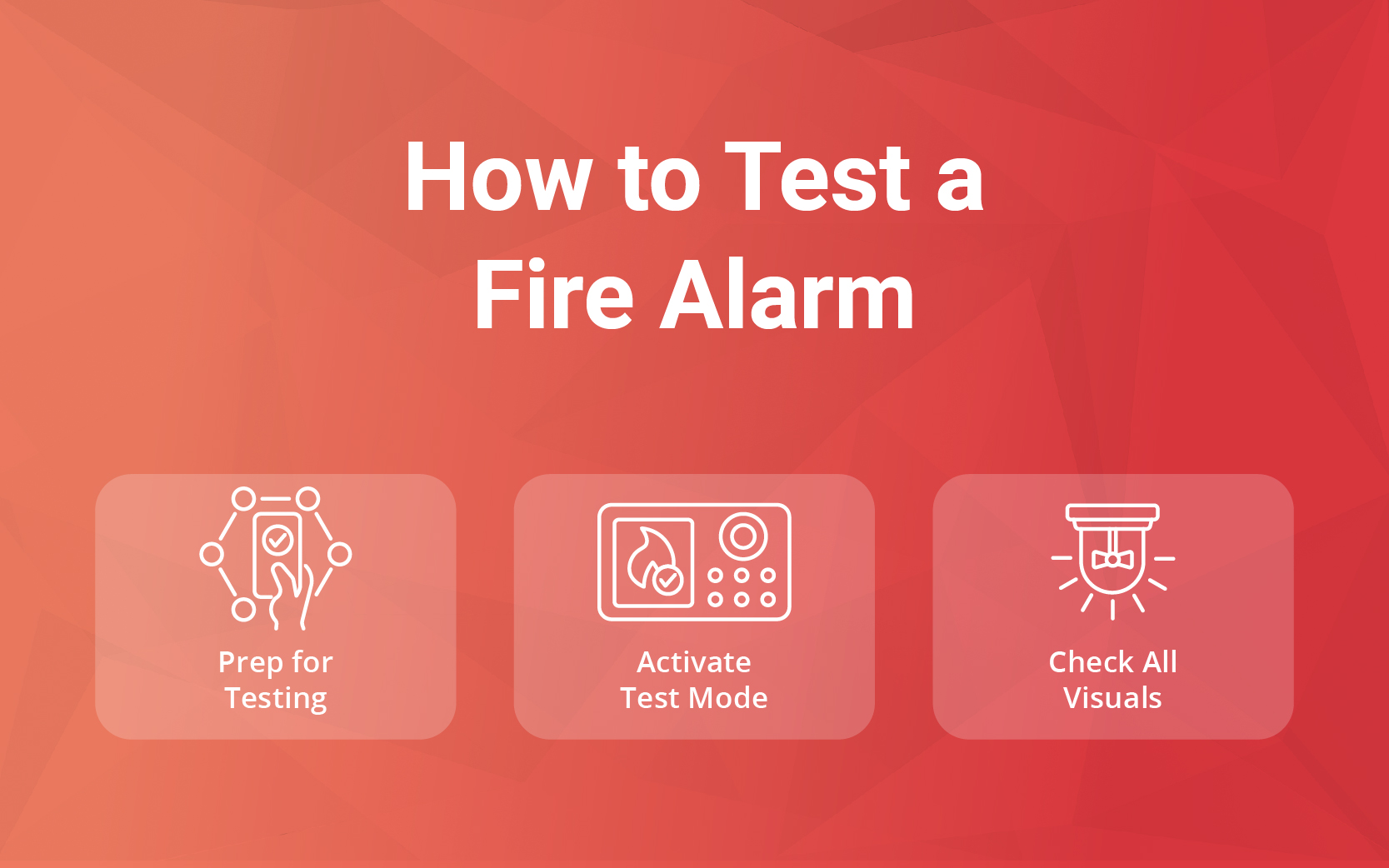If testing a fire alarm system sounds like a pain you’d rather not deal with, you’re in the right place. Fire alarm tests, though inconvenient, are a necessary part of ensuring the safety of your home, business, family, employees, and self. Fortunately, the test itself may be easier than you think. In this article, you’ll learn how to test a fire alarm in a few easy steps.
How to Test a Fire Alarm in 7 Simple Steps:
Step 1: Let People Know What’s Happening
The first thing you do when testing a fire alarm is let everyone know what’s happening ahead of time. This should include occupants, responders, and anyone who might hear and misinterpret a false alarm.
Many commercial alarm systems — and even certain residential ones — are directly linked to dispatch teams, whether that be an alarm company like PEAK or the fire department itself. In order to prevent an unwanted mess, be sure to let everybody know when to expect a test alarm.
Step 2: Get Things Ready for Testing
Different fire alarm systems will have different needs for testing. If your system is high up or ceiling mounted, you may need to procure a ladder. If yours has a convenient control panel, preparations may be simpler. Either way, be sure to identify your system’s test button ahead of time.
Step 3: Activate Your System’s Test Mode
Once all prep work is in order, it’s time to begin. Most modern fire alarm systems have a test mode or a special button specifically for testing purposes. Find this control and activate it. You may want to make sure you’ve got earplugs ready.
Step 4: Listen for the Alarm
Once the test mode is activated, it’s time to wait and listen. Walk around the premises and make sure your alarm is loud and clear from all applicable areas where someone may need to hear it. If your alarm links to a dispatcher, verify that the team has received the test alert as well.
Step 5: Check All Visual Alarm Signals
While the alarm is still sounding, this is your chance to inspect any visual signals that your system may use. Some systems feature strobe lights, while others have flashing LEDs. Before deactivating the test alarm, make sure that these visual indicators are operational for anyone who may have hearing impairments.
Step 6: Remember to Reset the Alarm!
After completing the test and verifying that everything is in working order, it’s important to reset the alarm to its normal operational mode. Even if your system is in perfect condition, it must be up and running in order to save lives. Always remember to reset the alarm!
Step 7: Record and Date Your Test Results
Be sure to record the results of your fire alarm test with the time, date, and any other relevant information. Accurate records help to track the performance of your system, which is important both to your safety and regulatory compliance. Plus, it’s a great way to indicate when it’s time for your next test.
PEAK Alarm: Fire Protection You Can Count On
Follow these simple steps, and you can work and play with confidence that your fire alarm system will keep everyone safe. While these tests can be tedious, they’re an essential part of fire safety for you, your property, and anyone who may be present on site.
For comprehensive fire safety measures, professional system installation, regular maintenance, and around-the-clock monitoring, PEAK Alarm is the Mountain West’s most trusted provider. If your home or business is in need of a dependable fire alarm system, contact the experts at PEAK Alarm today.
Protect what matters most to you: Contact PEAK Alarm today.

